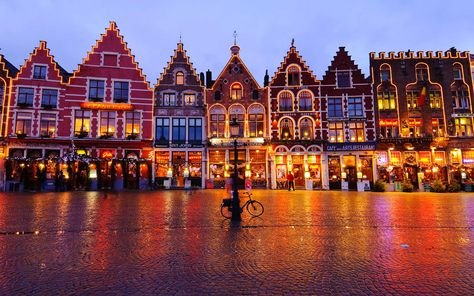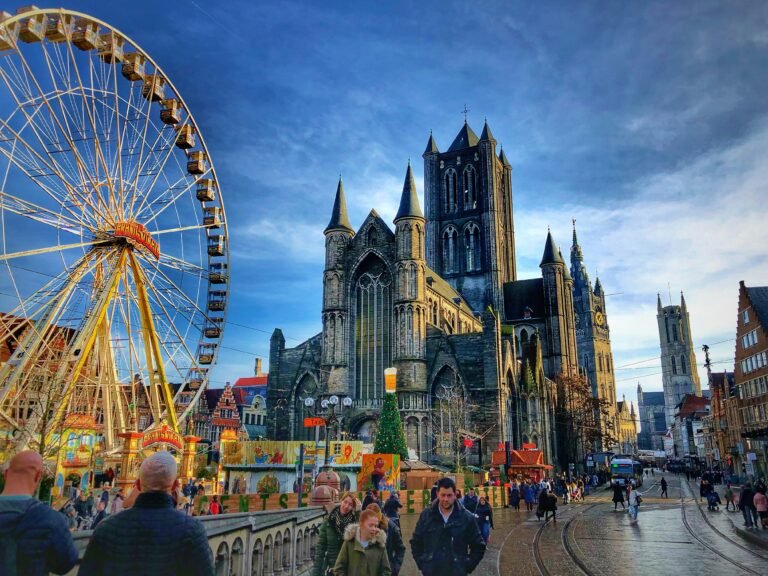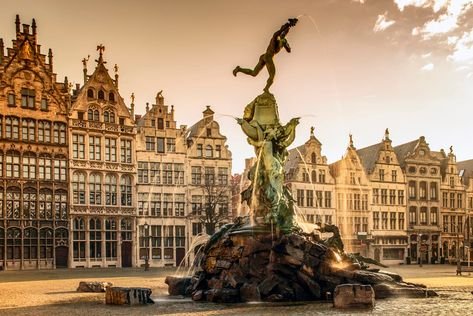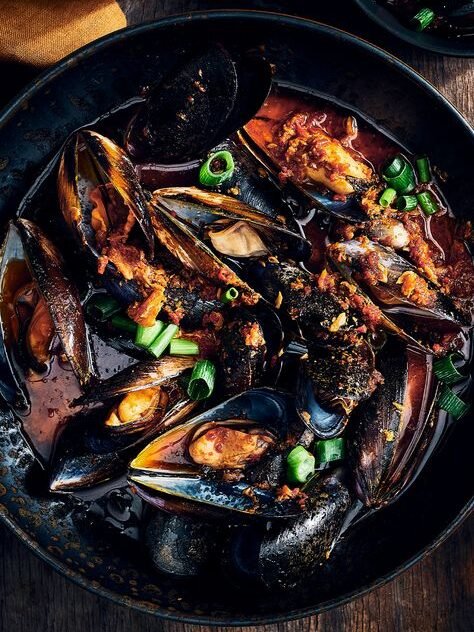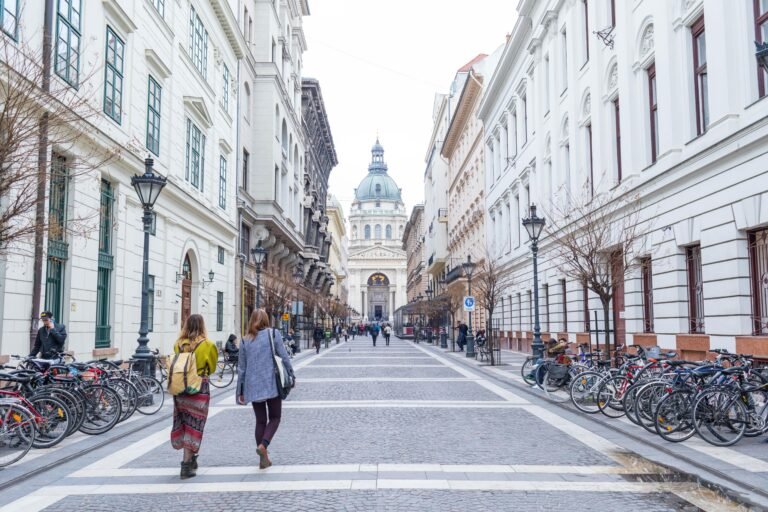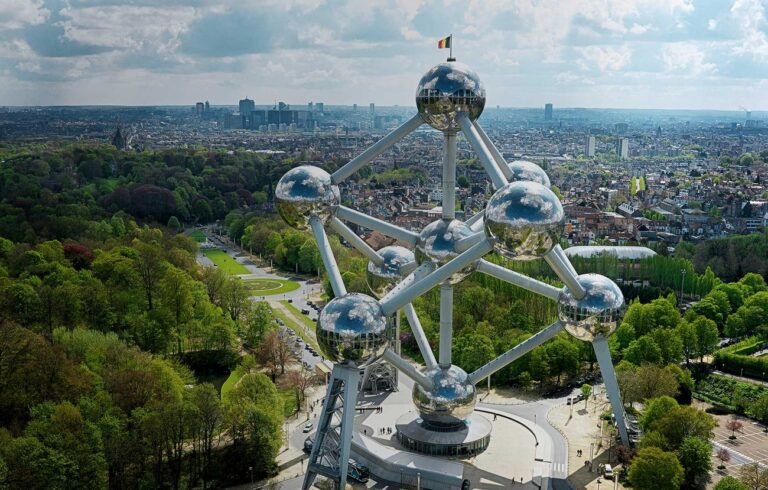Bruges vs Brussels: Which Belgian City Matches Your Travel Style?

Belgium matches Maryland’s size, yet choosing between Bruges and Brussels feels like picking between two worlds. Bruges captivates visitors with its medieval charm and picturesque canals, which earned it the nickname “Venice of the North.” Brussels stands as the vibrant unofficial capital of the European Union.
Bruges transports you through time with its preserved architecture and rich history. The city’s heritage includes the world’s first Stock Exchange, 714 years old. Brussels showcases its magnificence through the stunning Grand Place, which remains Belgium’s most populated region. These distinct destinations sit just a two-hour train ride apart, and we’ll help you pick the city that matches your travel style.
Each city provides something special – Bruges’s fairytale atmosphere and Brussels’s metropolitan energy. This piece breaks down everything in these Belgian gems to help you plan your perfect getaway.
Matching Your Travel Personality to the Right Belgian City
Travel style plays a big role in choosing destinations. This becomes clear in the Bruges vs Brussels debate. These Belgian cities sit just an hour apart by train but offer completely different experiences. Let’s find out which city matches your travel personality.
History Buffs: Where Medieval Meets Modern
Your choice between Bruges Belgium and Brussels depends on which era of history fascinates you most.
Bruges is a history lover’s dream. This medieval city earned its by preserving its historic settlement exceptionally well UNESCO World Heritage status[1]. Walking through the city of Bruges transports you to a living museum. Cobblestone streets weave through medieval buildings. The 13th-century Belfry tower, built in 1240, stands as proof of the city’s rich past [1].

Brussels tells a different story that spans many centuries. The Grand Place ranks among the world’s most stunning squares. It shows the city’s progress through time with its 15th-century Gothic town hall. The square features guild houses that were rebuilt after Louis XIV bombed the city in 1695 [2]. Brussels attracts history enthusiasts with its mixture of medieval roots, Art Nouveau designs, and modern European Union buildings.
Art and Culture Enthusiasts: Museums and Galleries
The Bruges Brussels cultural scene shows some major differences.
Brussels leads the way with over 70 museums and galleries[1]. Art lovers can visit:
- The Royal Museum of Fine Arts, which houses two museums showing Flemish masters and modern Belgian artists [3]
- The Magritte Museum is home to the largest collection of the surrealist’s work
- Unique spaces like the Musical Instruments Museum that displays over 7,000 pieces [5]
Bruges in Belgium packs its cultural punch into a smaller space. The Groeningemuseum offers a complete look at Belgian visual arts, featuring exceptional works by Flemish primitives Jan van Eyck and Hans Memling [1]. The Gruuthusemuseum got a fresh update and now showcases 500 years of Bruges history through beautiful tapestries and stained glass [3].
Relaxation Seekers vs. Urban Explorers
Brussels and Bruges show their biggest differences in their atmosphere.
Bruges Belgium welcomes those seeking peace with its “fairytale pretty” setting [1]. This relaxed city lets you take your time. White swans float along canals past historic buildings [1]. You can walk everywhere in compact Bruges, and romance fills the peaceful air [1].
Brussels attracts those who love city life. The city hosts 179 different nationalities and buzzes with international energy [1]. Urban adventurers love exploring diverse neighborhoods. They range from the modern EU Quarter to the fun Comic Strip Route that shows off Belgium’s love for cartoon art [2]. The city stays active all night, perfect for travelers who want variety [6].
The choice between where is Bruges and Brussels comes down to your preferred pace. Bruges quiets down early while Brussels keeps its energy going for night owls seeking city adventures [6].
Bruges in Belgium: The Fairytale Medieval Experience
Visitors who call Bruges in Belgium a fairytale destination speak the truth. This medieval city earned its UNESCO World Heritage status in 2000[7]. Its network of canals, cobbled streets, and storybook architecture make it one of the world’s most romantic cities [7].
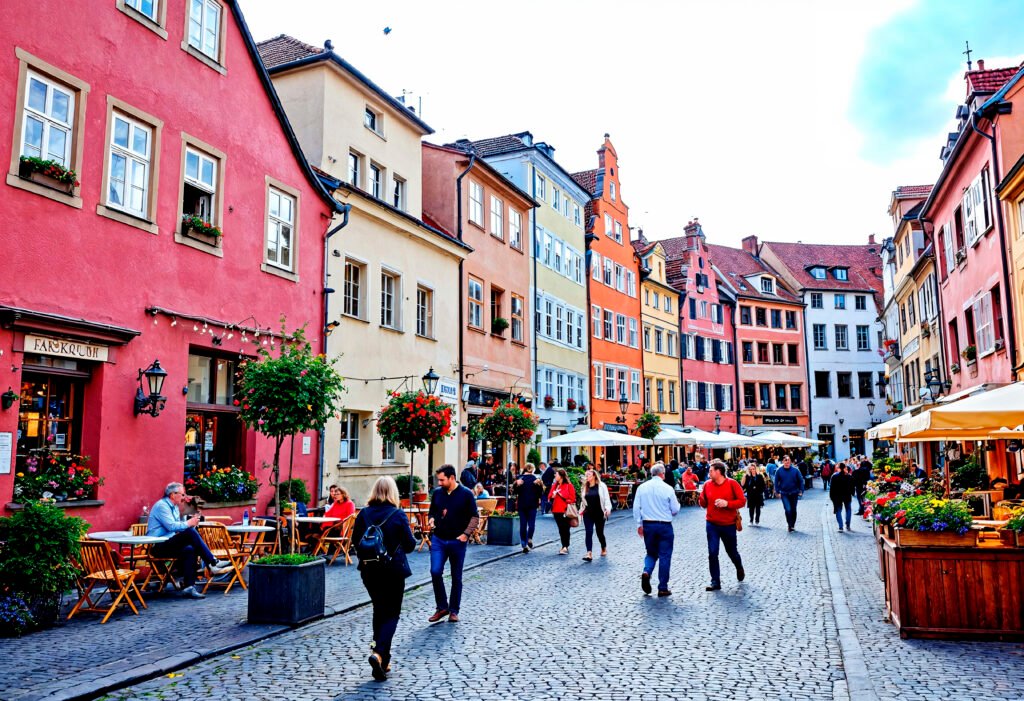
Canal Tours and Romantic Viewpoints
A boat ride through Bruges Belgium gives you a viewpoint that walking can’t match. Visitors can take a 30-minute tour from any of the five landing stages to see the city’s heart [8]. The experience has become even better since 2020, as . These create ripple-free, quiet rides through the waterways half the fleet has switched to electric boats[8]. The boat glides past several landmarks:
- The medieval port district showcases the elegant Burghers’ Lodge
- The Groenerei stands as one of Bruges’ most romantic canals
- The centuries-old Belfry Tower rises above Rosary Quay
- The Boniface Bridge remains a favorite spot among romantic couples [8]

Rosary Quay (Rozenhoedkaai) provides the perfect backdrop to capture that classic city of bruges selfie [9]. The Sint Anna district northeast of the center offers quieter romantic spots. The bridge over the Lake of Love has become a popular place to pop the question [10].
Climbing the Belfry Tower
The 13th-century Belfry reaches 83 meters into the Bruges Brussels skyline [11]. A climb up all 366 steps rewards you with stunning views of the city [12]. The medieval treasury sits along the way, where city charters and seals once rested safely. The impressive music drum that controls the carillon still works today [12]. The tower’s 47 bells ring out under the city carillonneur’s touch every Wednesday, Saturday, and Sunday [11].
The climb gets tight near the top, but the views of the bruges in Belgium make it worthwhile [13]. This UNESCO-recognized building shows the best of medieval urban architecture and public spirit [11].
Chocolate and Lace: Traditional Crafts of Bruges
The comparison between Brussels and bruges must include the crafts that brought fame to both cities. Bruges holds the title of Belgium’s chocolate capital. The V-Chocolatier on Philipstockstraat, run by three generations of craftsmen, creates the city’s finest chocolates [14].
Bruges’ lace-making heritage dates to the 16th century. Local Flemish artisans created more than 1,500 types of lace using silver, gold, and silk [15]. The “Handmade in Brugge” label now recognizes local artisans who create their works by hand [16]. The Sashuis serves as the starting point for a guided walk that shows both historical and modern craft makers throughout the city center [16].
Brussels: The Cosmopolitan Capital Experience
Brussels stands as Belgium’s vibrant cosmopolitan heart where international politics, quirky art, and irreverent humor create a modern experience that’s nothing like Bruges’ medieval charms. The capital gives travelers a completely different vibe that matches its European diversity when looking at Bruges vs Brussels.
EU Quarter and Political Significance
The city earned its nickname because it hosts the European Union’s executive branches capital of Europe[17]. Brussels’ political importance goes beyond its national authorities—who already split power into three regions and major language communities [18]. The city serves as home to:
- The European Commission headquarters in the iconic cruciform Berlaymont building (constructed 1967-69)
- The Council of the European Union
- Committee sessions of the European Parliament
- The EU’s Committee of the Regions and Economic and Social Committee [18]
This hub of international governance has revolutionized the Léopold Quarter east of Brussels Park and brought new energy to the city center [17]. A large number of international residents see their stay as temporary, which creates a somewhat transient workforce atmosphere [19].
Comic Strip Route and Quirky Attractions
Brussels takes pride in being the comic capital of the world through an amazing urban art project. The city’s walls have been featured across the capital since 1991 comic strip murals, now numbering over 80[5]. This special trial shows off Belgium’s favorite comic characters:
- Tintin, with stories now in 77 languages
- The Smurfs, Lucky Luke, and Asterix
- Gaston Lagaffe and many other Franco-Belgian favorites [5]
The route leads visitors through the historical center, UNESCO World Heritage sites, and architectural gems like the Royal Saint Hubert Galleries [5]. This artistic path lets people appreciate the “ninth art” that shapes Belgian cultural identity while exploring Brussels’ diverse neighborhoods [1].
Manneken Pis and Other Iconic Symbols
A Bruges vs Brussels comparison wouldn’t be complete without the capital’s famous mascot. The Manneken Pis, a small bronze statue of a urinating boy from 1619, has become Brussels’ most recognizable icon [17]. People call it the city’s “oldest citizen” [6], and this cheeky fountain captures Brussels residents’ rebellious spirit and sense of humor [20].
The statue has a unique tradition—it gets dressed up in different costumes from its collection of over 900 outfits [20]. This custom started in 1698 when the Spanish Netherlands’ Governor gave it its first set of clothes [6]. The original statue now sits safely in the Brussels City Museum, while a replica stands at the original spot [21].
Brussels shows off its playful side with two more statues: Jeanneke Pis (a female version) and Het Zinneke (a dog version) [1]. These additions prove the city’s unique sense of humor even more.
Family-Friendly Features in Brussels and Bruges
Families planning a trip to Belgium often find themselves stuck between bruges vs Brussels. These cities each bring something special to the table and appeal to different family preferences.
Kid-Friendly Museums and Interactive Experiences
Brussels shines with its amazing selection of kid-focused museums. The Museum of Natural Sciences knows how to engage young explorers with . Kids 5 and older love playing archeologist in the Paleolab Europe’s largest dinosaur gallery[22]. The Belgian Comic Strip Center brings families face-to-face with famous characters like Tintin and the Smurfs. Science comes alive at the Scientastic Museum where kids can try out 101 hands-on experiments [23].
The city of bruges takes a different approach with its cultural spots. Kids love exploring the Gruuthuse Museum’s interactive displays that showcase wooden sculptures and historic lace. De Toverplaneet indoor playground saves the day when it rains. Your kids will have a blast with its space-themed climbing towers, slides, and massive 100m² bouncy castle [2].
Parks and Outdoor Spaces
Green spaces make both cities perfect for family fun. bruges Belgium’s Koningin Astridpark feels like a peaceful getaway with playgrounds packed with slides, swings, and climbing frames. The pond and fountain create the perfect picnic spot [2]. Minnewater Park’s fairy-tale setting comes complete with cycling paths, walkways, and a playground that kids love [2].
Brussels and bruges make it easy for families to explore outdoors. Brussels has lots of parks where kids can play [24]. The transport system works great for families too. Kids under 6 ride free with a paying adult, and those between 6 and 11 can get a free J pass [24].
Family Accommodation Recommendations
Bruges in Belgium has some great family-friendly hotels. Hotel Jan Brito’s noble-themed family rooms sit inside a beautiful 16th-century listed building [25]. Families looking for value will love Hotel Monsieur Ernest’s spacious rooms in a restored 14th-century home [25]. De Castillion steps up the luxury game with its Duplex Family suite that comes with two bedrooms and bathrooms [25].
Brussels knows how to welcome families too. Hotel Barsey’s connecting rooms come with a nice 10% discount on Comic Museum tickets [26]. Green Park Hotel Bruges makes things even better with free breakfast for kids under six and half-price meals for children 6-12 years old [27].
Seasonal Considerations for Visiting Brussels and Bruges
Your timing can make or break your visit when choosing between Bruges vs Brussels. The time of year you pick will shape your entire experience and affect everything from crowds to festivals.
Summer Tourism: Managing the Crowds in Bruges
Summer changes the city of bruges into one of Europe’s busiest spots in Europe. The numbers are staggering – 8.3 million people visited Bruges in 2023, which is remarkable for a city with just 120,000 residents [3]. Tourist numbers now reach 131 visitors per 100 locals [28]. The local authorities have started controlling overtourism by limiting cruise ships to two per day at nearby Zeebrugge [3].
Summer brings some great benefits though. The weather is perfect for canal tours with temperatures around 20°C (70°F) [29] from June through August. Bruges Belgium comes alive with festivals during this time, and the famous Ghent Festival fills the streets with music, comedy, and performances [30].
Winter Markets and Festive Experiences
Winter turns both cities into magical destinations. Brussels and bruges become winter wonderlands in December and January with their unique Christmas markets. Brussels puts on, where you’ll find over 200 chalets Winter Wonders, one of Europe’s largest Christmas markets[31] from late November to early January. The Grand Place steals the show with an amazing sound and light display [32].
Bruges in Belgium celebrates Winter Glow from November 22, 2024, to January 5, 2025 [33]. You’ll find two different Christmas markets here – the classic one at Markt Square and craft-focused stalls at Simon Stevin Square. The city’s fairytale atmosphere comes alive with the Minnewater ice skating rink and Light Experience Trail [34].
Shoulder Season Advantages
Smart travelers often pick shoulder seasons to visit Bruges vs Brussels. The crowds thin out in late spring (March-May) and early fall (September-October), and the weather stays mild [29]. Hotel prices drop during these times [35], making your trip more budget-friendly.
Shoulder season travel keeps getting more popular. Intrepid Travel saw a 61% jump in shoulder season bookings to Western Europe [4]. The weather stays pleasant without extreme temperatures, and all attractions and restaurants stay open [36]. The quieter atmosphere lets you connect better with locals and really experience each city’s unique culture [36].
Conclusion
Bruges and Brussels are two amazing Belgian destinations that give visitors completely different experiences. When we compare them, we can see clear differences between these fascinating cities.
Bruges attracts history buffs and couples with its well-preserved medieval charm. The city’s UNESCO-recognized architecture and peaceful canals create a fairytale setting. You’ll love this city especially when you have a passion for taking things slow, appreciating traditional crafts, and capturing picture-perfect moments everywhere you look.
Brussels offers something different as Belgium’s bustling capital. The city mixes historical grandeur with modern energy that draws urban explorers, art enthusiasts, and people interested in international politics. Its huge collection of museums, comic culture, and diverse neighborhoods make it perfect to explore for days.
Both cities welcome families with open arms. Brussels has hands-on museums and plenty of outdoor spaces. Bruges keeps things cozy with its walkable streets and kid-friendly cultural spots. Weather plays the most important role in planning your visit. Summer brings crowds to Bruges, while winter turns both cities into magical spots with holiday markets and special events.
Your priorities will help you pick between these Belgian gems. Bruges is perfect for a romantic escape or stepping back in time, while Brussels calls to those who love big-city life and varied cultural scenes. Many travelers head over to both cities, thanks to the quick train ride between them that lets them experience Belgium’s rich mixture of cultures.
FAQs
Q1. Which city is better for a short visit, Bruges or Brussels? Bruges is ideal for a short visit, offering a charming medieval atmosphere and picturesque canals. However, Brussels provides a more diverse experience with its mix of historical and modern attractions. Choose based on your preference for a quaint town feel or a bustling capital city vibe.
Q2. What are the main attractions in Bruges? Bruges is known for its well-preserved medieval architecture, scenic canals, and the 13th-century Belfry tower. Visitors can enjoy canal tours, climb the Belfry for panoramic views, and explore traditional crafts like chocolate-making and lace-making.
Q3. What unique experiences does Brussels offer? Brussels offers a blend of historical and contemporary attractions. Highlights include the Grand Place, the European Union headquarters, the Comic Strip Route featuring over 80 murals, and iconic symbols like the Manneken Pis statue. The city also boasts a vibrant food scene and nightlife.
Q4. Is Ghent worth visiting when traveling to Belgium? Many travelers recommend Ghent as an excellent alternative or addition to Bruges and Brussels. It offers a mix of medieval charm and a more authentic, less touristy atmosphere. Ghent is known for its well-preserved architecture, vibrant cultural scene, and student-friendly vibe.
Q5. What’s the best time of year to visit Belgian cities? The shoulder seasons of spring (March-May) and early fall (September-October) are ideal for visiting Belgian cities. These periods offer milder weather, smaller crowds, and lower accommodation rates. Winter can be magical with Christmas markets, while summer brings warmer temperatures but larger tourist crowds, especially in Bruges.


